Subscribe now and get the latest podcast releases delivered straight to your inbox.
Create Better Website Videos by Avoiding These 3 Mistakes

Oct 25, 2023
According to HubSpot, more than nine out of 10 people report wanting to see more videos from brands. But that doesn’t mean that simply producing more video will be the answer to your marketing woes.
Yes, volume of video is important, but you want to be producing the right video, too.
In my work, I help SMBs around the country solve their video challenges, so I’ve seen a fair number of mistakes. And honestly, it’s often the same few mistakes over and over again.
Below, I’ll detail some of the most common errors I see businesses make.
We’ll cover:
- Where on your website you need videos
- 3 common mistakes I see with website video content
- My video advice for every business owner
(But note, we are only discussing website videos today — we’ll cover social media videos, 1-1 sales videos, and more in other posts.)
Ready to dive in and make your website better?
Let’s go.
Where to put videos on your website
Even though I’m a video trainer with a video production background, I’m not going to take the easy way out and say that you do not need a video on every page of your site.
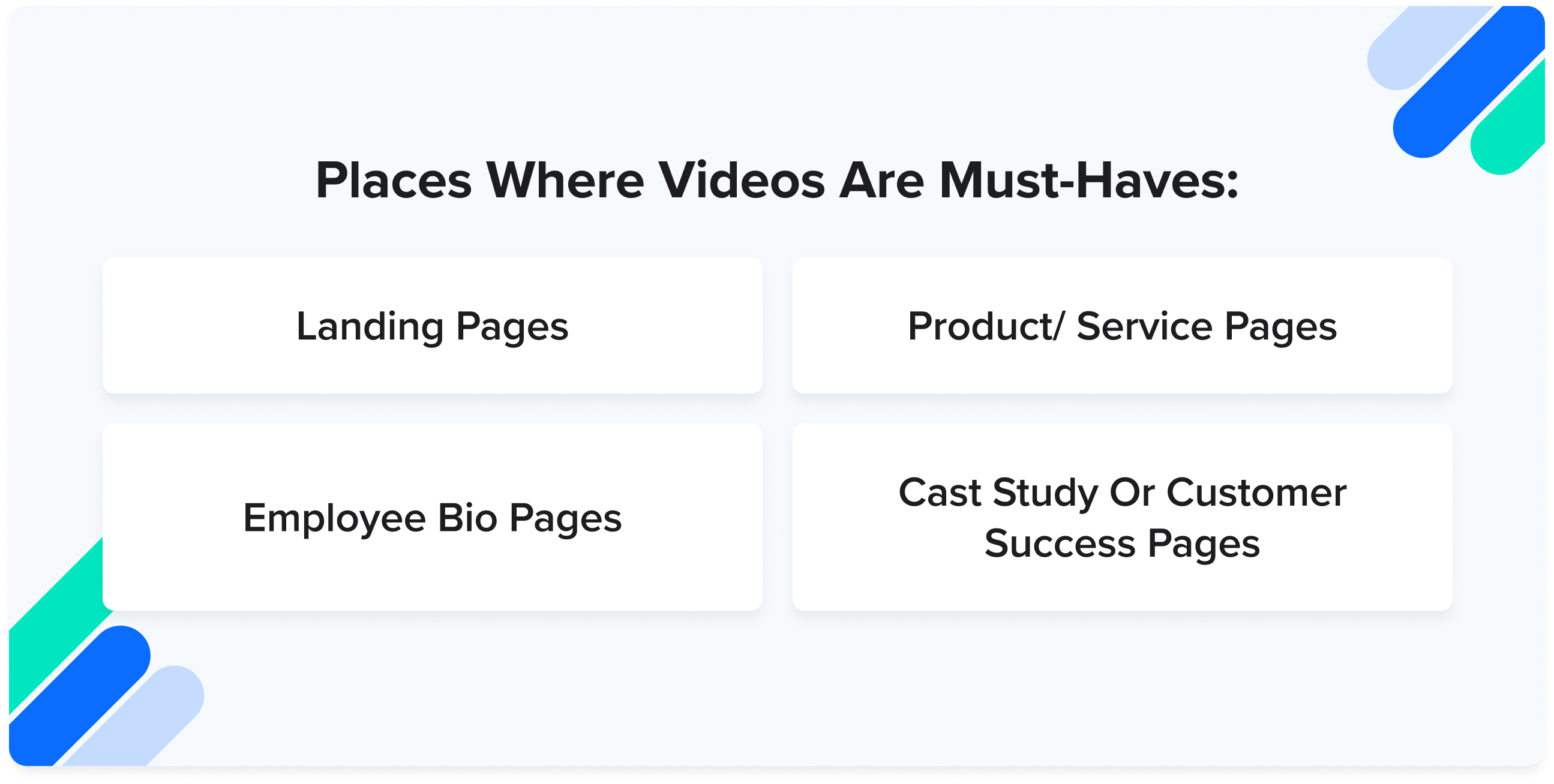
For some smaller businesses with limited offerings, it might make sense to have a video on every page. For others, it’s impossible and unnecessary.
And let’s face it, there are some pages where a video isn’t really at the top of your priority list.
Let’s also not forget that video is very hard to update. It’s not like a homepage headline or a blog article. You can’t just make a small tweak if you need to. So, if some detail in a video changes, you likely have to reshoot. The more videos you have, the bigger the job.
With that said, here are places where I say videos are must-haves:
For homepages, video is often necessary, but shouldn’t be the top priority unless the pages mentioned above have video already. Same thing with “about us” pages, blog articles, and the like.
There’s no doubt that videos can enhance the user experience, but you should put your effort where it will do the most good.
With that said, let’s look at some common mistakes.
3 mistakes you’re probably making with your website videos
Whether you’re following IMPACT’s framework or not, there’s a chance you’re making a few common mistakes with your website videos. Let’s look at each mistake — and then cover how to avoid it.
Problem #1: Video is too ‘precious’
It’s 2024. Your business needs to develop a culture of video so that video content is integrated into everything you do. It should be a part of your social presence, your website, and your communication.
However, too many businesses still see video as a big expensive endeavor that only happens once in a while. For them, video is a highly produced, once-a-year thing that’s handled by outside experts.
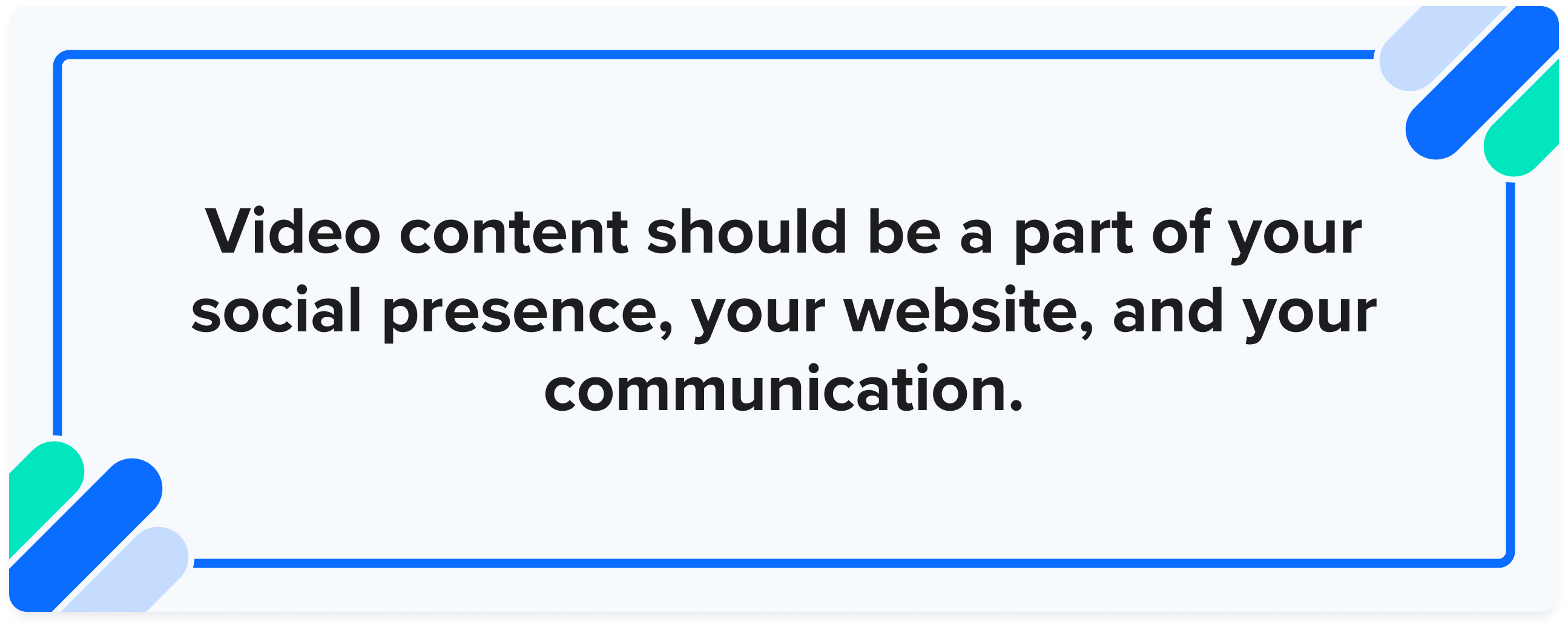
The problem with the video-only-happens-once-a-year approach is that you put video on a pedestal, out of reach of your team. It’s expensive and inefficient. You’ll never be able to produce a good volume of video content if you’re only doing it occasionally — with the help of a hefty production team.
Here’s an example of a highly-produced homepage video that feels more slick than authentic:
Solution: Empower your team to produce video
Right now, you’re carrying a sophisticated digital camera right there in your pocket. There are AI-powered click-and-drag editing tools that are easier than ever.
If you hire an in-house videographer who can film, edit, and produce, all of a sudden, video can feel like it’s part of your culture — something that’s fun and collaborative.
Next thing you know, you won’t need spokespeople or stock footage. It can be your people starring in your own content.
When you hire a videographer, you take the first step towards building a culture of video — and taking video off its pedestal.
Problem #2: Your videos are all about you
I see this all the time. Businesses don’t really know what to say in their videos, so they just start bragging. It’s like the guy on a first date who fills the empty silence with his own resume.
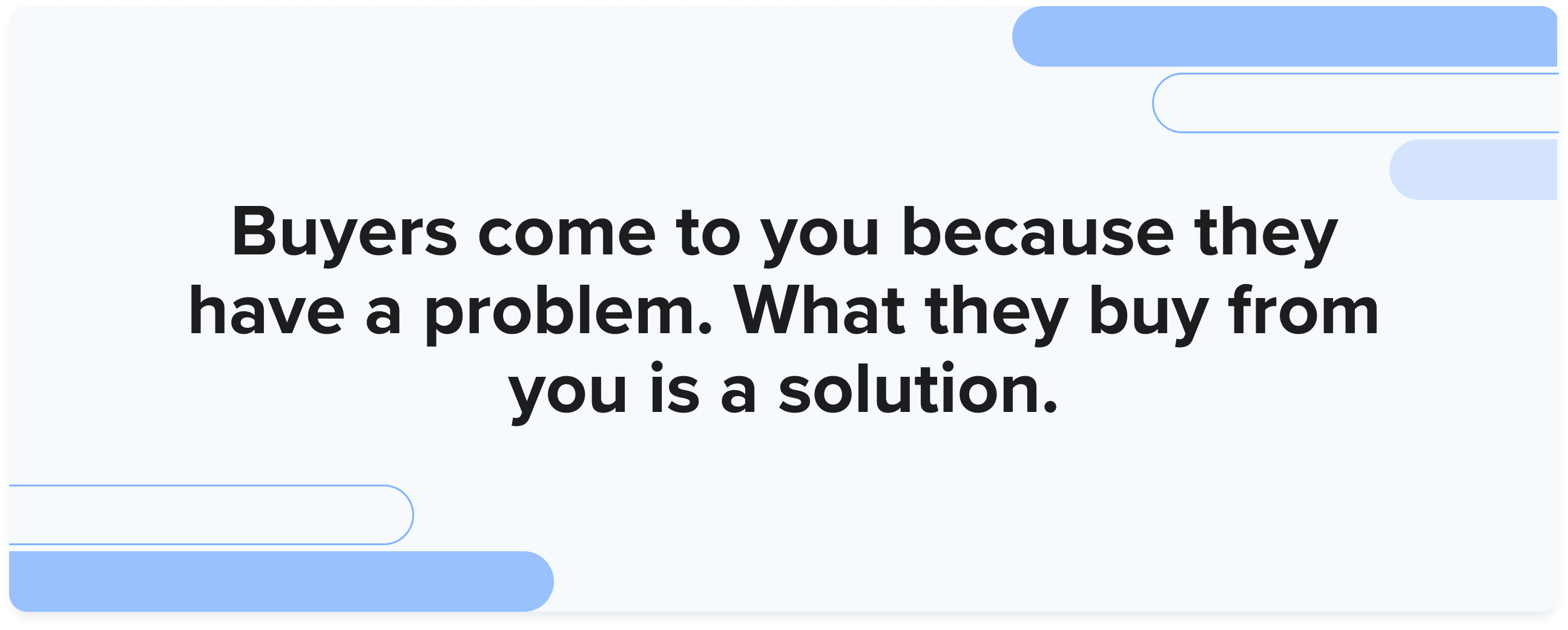
As much as you want to talk about your awards and certifications, this often does more harm than good.
Buyers come to you because they have a problem. What they buy from you is a solution. Sell the outcome, sell the experience, sell the change they’ll experience — don’t sell your own accolades.
Look at this gorgeous video from Leica.
There’s not a single mention of cameras, megapixels, or aperture. There’s nothing here to suggest someone buy a Leica instead of a Cannon or Nikon.
Leica is selling the outcome, selling the very idea of photography. And it’s glorious.
Solution: Make your buyer the hero of the story
In Building a StoryBrand, author Donald Miller explains that your buyer wants to be the hero of their own story. So, instead of making your business the center of your marketing, put your buyer there. Make yourself a guide that can help your buyers to achieve what they want to achieve.
On a similar note, Ann Handley says in her book Everybody Writes, “The best way to keep readers reading is to talk about them, not you.”
Make your customers — and the outcome they will achieve — the focus of your videos. As a quick rule of thumb, pay attention to how many times you use “you” and “your” in your videos (i.e. talking to/about your customer), as opposed to “us” and “we” (talking about yourself).
As an example, check out this video from Daniel Alain:

Problem #3: Your videos are way too long
Here’s a personal pet peeve of mine: I get to a website of a business I’m checking out. I click on a video on their home page only to realize that it’s 11 minutes long.
That’s way too much for me.
In most cases, your videos don’t need to be nearly as long as you’re making them. People have a short attention span — especially early in the buyer’s journey. Don’t bog them down with too much detail.
Solution: Think elevator pitch
In most cases, videos should be short. A homepage video should be 90 seconds. A product video: 2-3 minutes. Even a client testimonial shouldn’t go on too long.
If a video has to be longer, front-load it with the surface-level detail so people can get the basics quickly If they want more depth, they can stick around for the rest.
Here’s a great example from Berry Insurance:
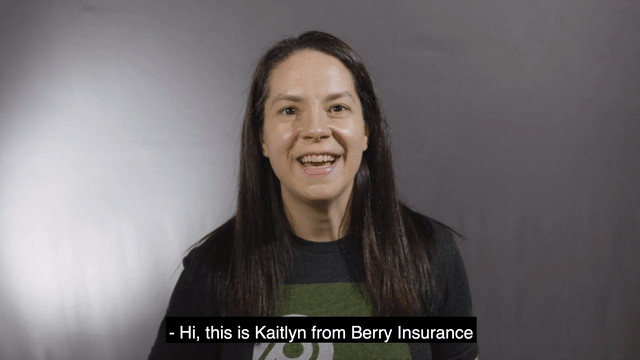
The importance of video on your website
The power of video is undeniable. As a storytelling tool, as a means of demonstration, it’s nearly unmatched. It’s the next best thing to seeing something with your own eyes — and sometimes, frankly, it’s even better.
Imagine you’re buying something sight unseen. Let’s say a new desk chair. You can read a description, you can look at pictures and specifications, but a video can really seal the deal.
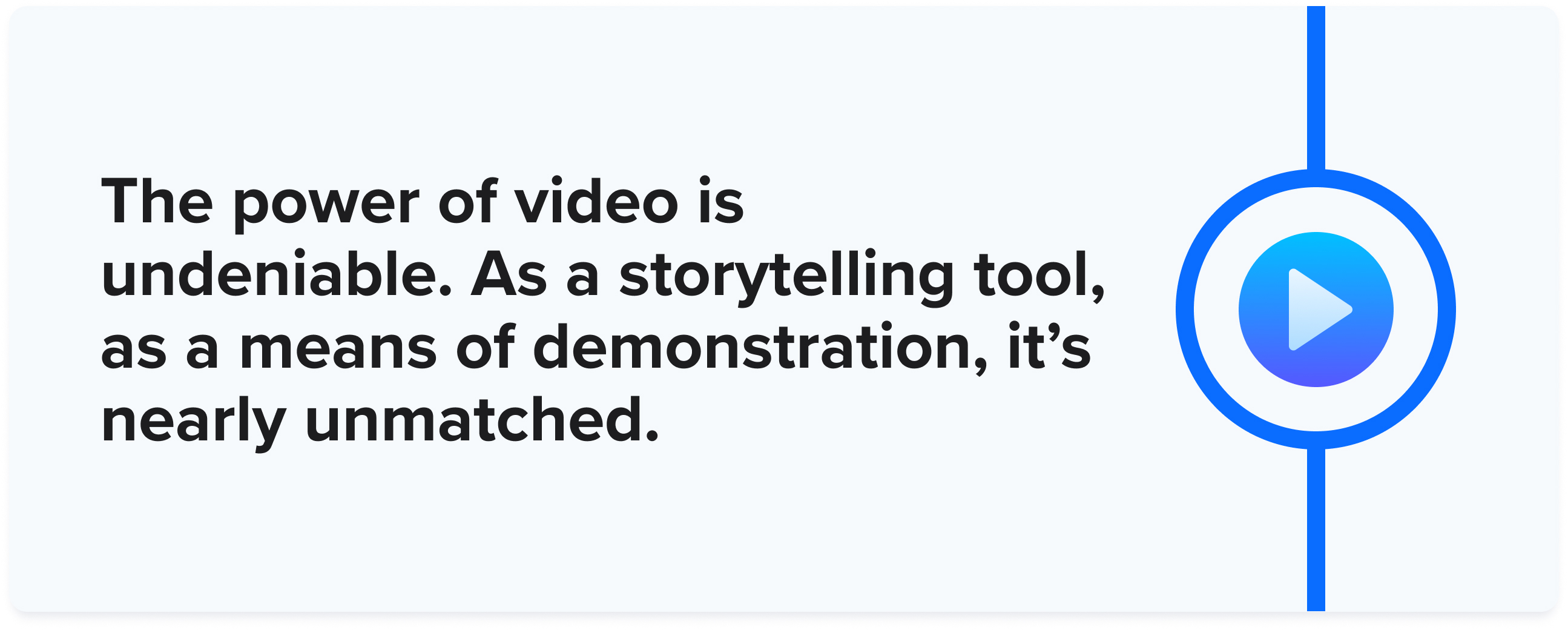
And if you’re buying a service, a video lets you see who you’re going to be working with, see what you’re going to experience.
As Marcus Sheridan often says, video allows your potential customers to see you, hear you, and know you before they ever reach out to your business. This means that videos are vital for building trust with a wide audience.
My advice for every business owner
There’s a saying in the tech world, done is better than perfect. While you certainly want any webpage video to be great, don’t let your desire for a perfect video paralyze you from ever getting anything done.
Think about it this way: If you never produce a video at all, you never get the data to know how to make it better.
So as you go out there and start making video, keep these three tips in mind.
- Don’t let video be a precious thing that you only do every now and then. Weave it into your culture. Make it a part of your brand.
- Don’t make your videos all about you. Remember, your buyer is the hero of the story.
- Don’t make videos that waste people’s time. Brevity is the name of the game.
And if you’re stuck, reach out to IMPACT. We help businesses just like yours bring their marketing and video production in-house so they can finally see the results they’re after.
Free: Assessment